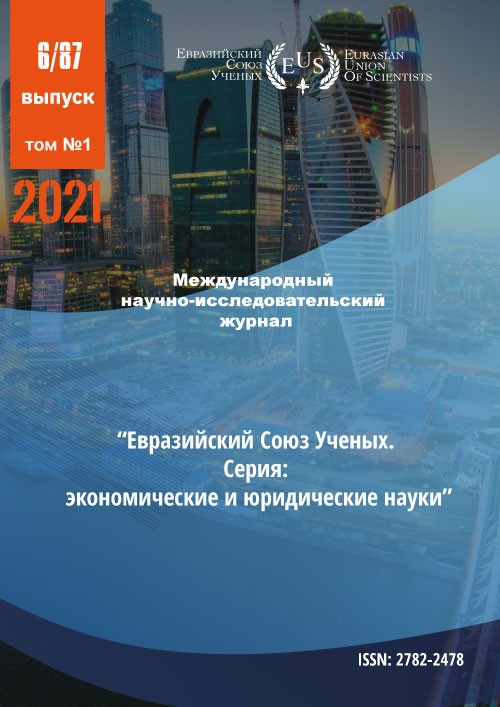SUPPORTING MAXIMUM PRODUCTION WITH FLEXIBLE PRODUCTION SYSTEMS
Abstract
The article shows that the introduction of a flexible production system requires huge investments and guarantees from an industrial enterprise. It is important to conduct detailed research on the planning, design and operation of an flexible manufacturing system. The computer system with its hardware and software plays an important role in the system, so they should also be given due attention. The hierarchy and architecture of a computer network must be considered with important planning and management strategies in mind. At the tactical level, a flexible production system is viewed as a whole. The primary problem is the distribution of production orders for the parts listed in the production schedule, according to alternative production strategies, which must be resolved promptly, since at the operational level, urgent problems are related to the functioning of the system in real time.
References
Katkova, T.V. Konkurentosposobnost, kak faktor vzaimodejstviya predpriyatiya s vneshnej sredoj / T.V. Katkova // Aktualnye voprosy upravleniya, ekonomiki i prava. Sovremennoe obrazovanie i ego rol v zhizni obshestva: materialy mezhdunarodnoj nauchno-prakticheskoj konferencii. – Novosibirsk, 2018. – S. 55-59.
Kerimov, T.A. Primenenie intellektualnyh sistem upravleniya v gibkih proizvodstvennyh sistemah / T.A. Kerimov // A posteriori. – 2017. – № 3. – S. 5-8.
Mezhov, I.S. Organizacionnye imperativy formirovaniya modeli upravleniya proizvodstvennoj sistemoj / I.S. Mezhov, L.N. Mezhova // Menedzhment v Rossii i za rubezhom.– 2017. – № 1. – S. 4–10.
Romanova, M.M. Primenenie novyh metodov upravleniya na predpriyatiyah / M.M. Romanova, V.A. Borodin // Ekonomicheskij analiz: teoriya i praktika. – 2017. – № 19. – S. 58.
Serdyuk, A.I. Kompyuternoe modelirovanie gibkih proizvodstvennyh sistem s avtomatizirovannoj sistemoj instrumentalnogo obespecheniya / A.I. Serdyuk, A.I. Sergeev, A.B. Radygin // Avtomatizaciya. Sovremennye tehnologii. – 2017. – T. 71. – № 9. – S. – 387–392.
Shamaev, S.Yu. Sistema kompyuternogo modelirovaniya gibkih proizvodstvennyh sistem na osnove obektno-orientirovannyh tehnologij / S.Yu. Shamaev // avtoreferat dissertacii na soiskanie uchenoj stepeni kandidata tehnicheskih nauk / Orenburgskij gosudarstvennyj universitet. – Orenburg, 2013.
CC BY-ND
A work licensed in this way allows the following:
1. The freedom to use and perform the work: The licensee must be allowed to make any use, private or public, of the work.
2. The freedom to study the work and apply the information: The licensee must be allowed to examine the work and to use the knowledge gained from the work in any way. The license may not, for example, restrict "reverse engineering."
2. The freedom to redistribute copies: Copies may be sold, swapped or given away for free, in the same form as the original.







